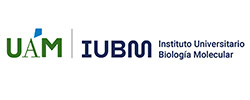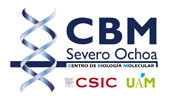Translational medicine in inborn errors of metabolism and other rare genetic diseases
Inborn errors of metabolism (IEM) are one of the major groups of rare diseases (1 every 800 newborns have one). Genomic high-throughput sequencing has dramatically accelerated gene discovery and transformed metabolic precision medicine. However, more than half of patients remain without a genetic cause identified. From the more than 1400 pathologies categorized as IEM, there are only therapies for hundreds of IEMs. Using a multi-omic layer approach in combination with functional genomics, we have contributed to identify new defects associated with pathology. We are highlighting identification of pathogenic variants: i) in a gene involved in the synthesis of coenzyme A associated with a severe dilated cardiomyopathy (PPCDC), ii) in the moonlighting H-protein encoded by GCSH that has a dual role in protein lipoylation required for bioenergetic enzymes iii) in genes other than SLC2A1 that usually has been associated with GLUT1 transporter deficiency and iv) in YIF1B associated with a severe neurodevelopment delay describing a new defect that combines a ciliopathies with a Golgiphatie.
Regarding therapies, we have been involved in the development of small chemical drugs targeted to rescue the activity of destabilizing mutant proteins as a common mechanism for loss and gain of function mutations in IEM. We have published evidence regarding the possible use of small chemical molecules such as celastrol in combination with pharmacological chaperones (PC) in the treatment of the severe rare diseases PMM2-CDG and methylmalonic aciduria, this last in combination with vitamin B12. Advancing the development of pharmaco-chaperoning, we have obtained five complete crystal structures of hPMM2 (free and bound to the essential activator glucose-1,6-bisphosphate, three for the wild type and two for the destabilizing p.Thr237Met variant. Using the structure, we have proposed that ~80% and ~50% of the missense variants of the core and cap domains respectively are potential candidates for treatment with PC. Furthermore, we have developed a drug discovery and screening platform using recombinant proteins and cellular models generated by CRISPRcas9 gene editing.
For preclinical evaluation, we have generated cellular models from patients and healthy hiPSC. We highlight the development of a protocol for the differentiation of iPSCs to hepatocyte-like cells (HLC) and their use as a preclinical model for the evaluation of PCs. in MMA, the HLC exhibited MMA disease hallmarks, and the pharmaco-chaperon treatment in combination with B12 significantly reduced the methylmalonic acid levels and rescue the liver damage associated with the disease.
Prof. Belén Pérez González. Catedrática. Departamento de Biología Molecular. UAM.
Prof. Pilar Rodríguez Pombo. Profesora Titular. Departamento de Biología Molecular. UAM.
Prof. Alejandra Gámez Abascal. Profesora Titular. Departamento de Biología Molecular. UAM.


